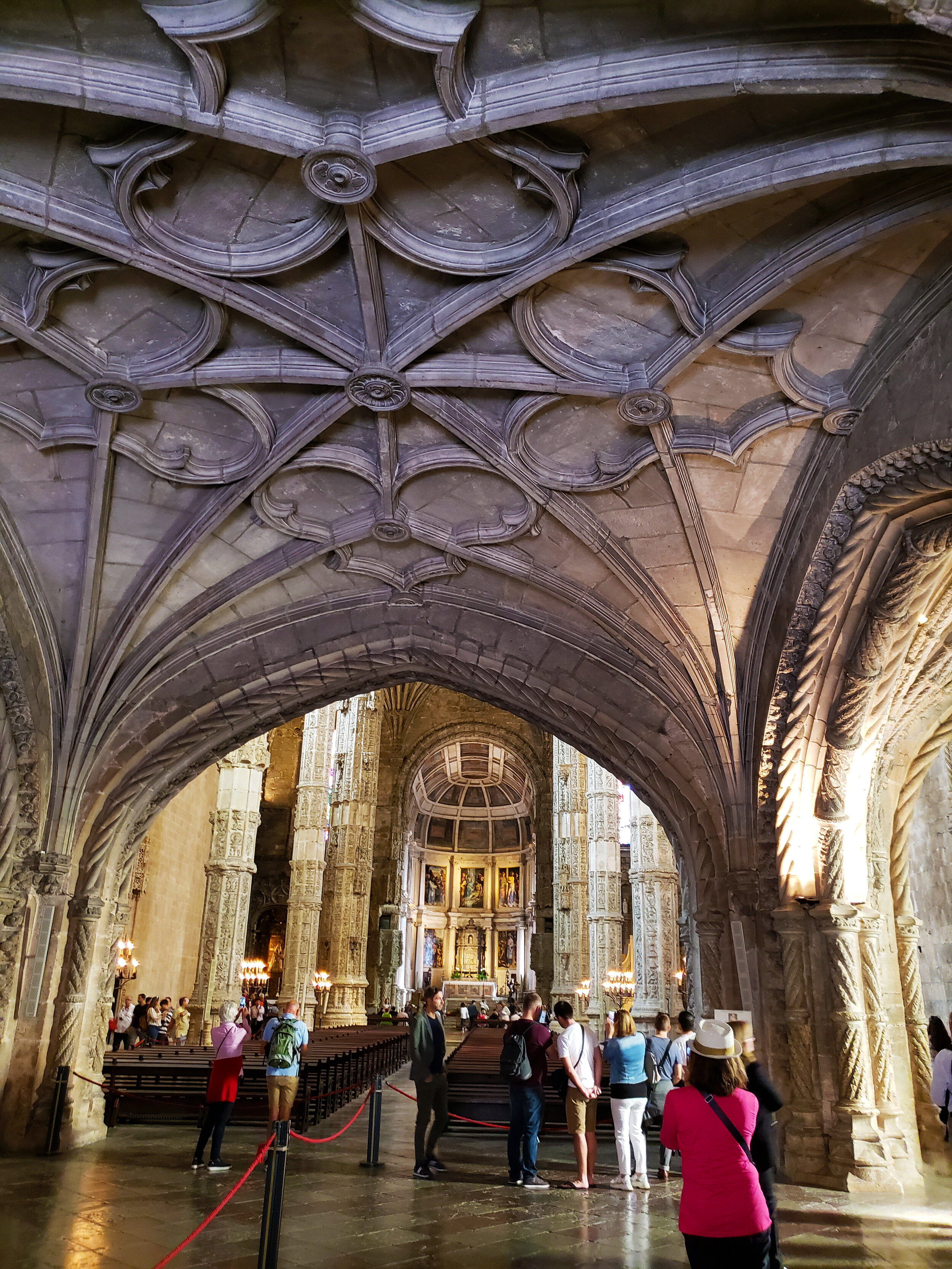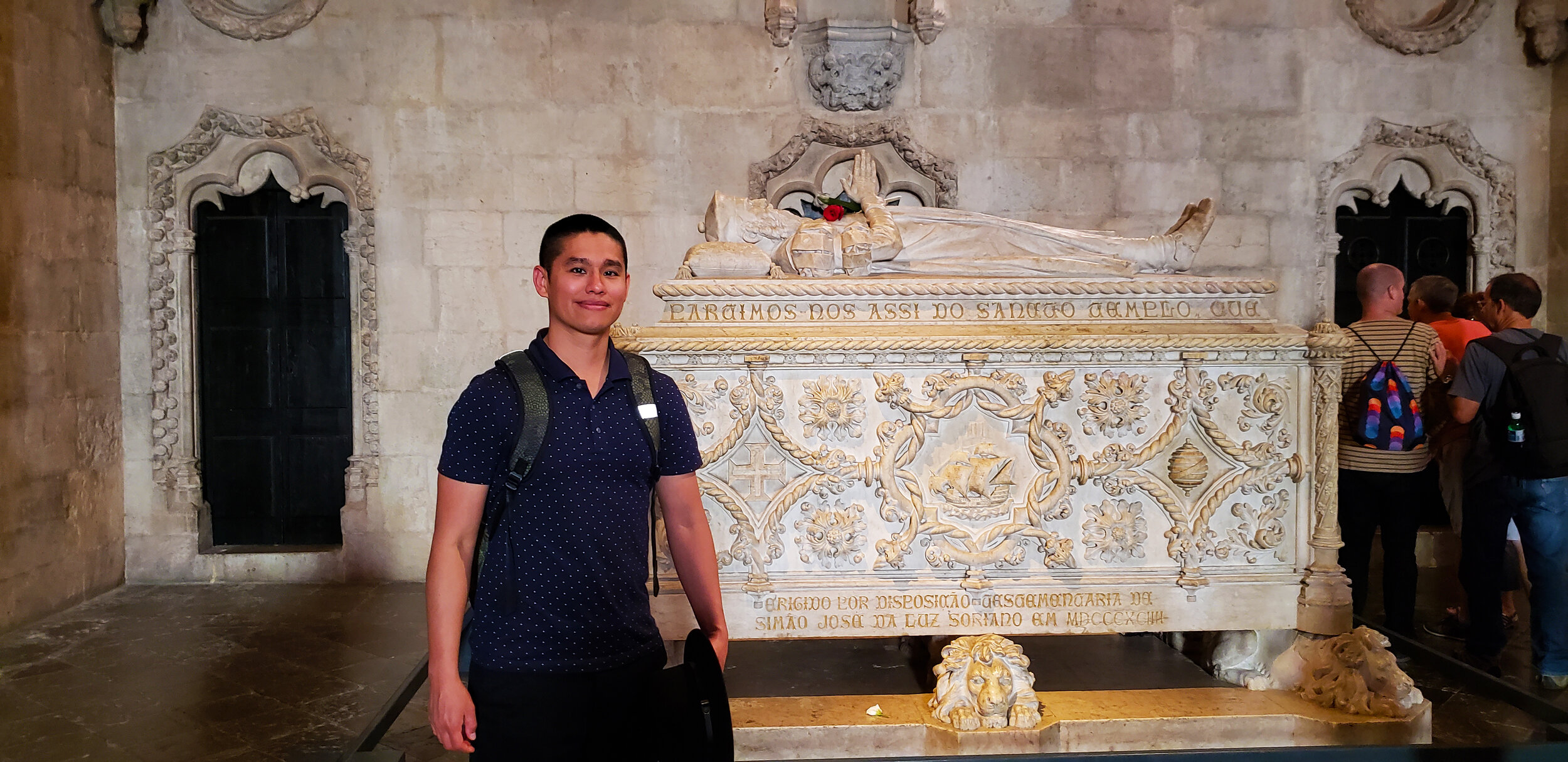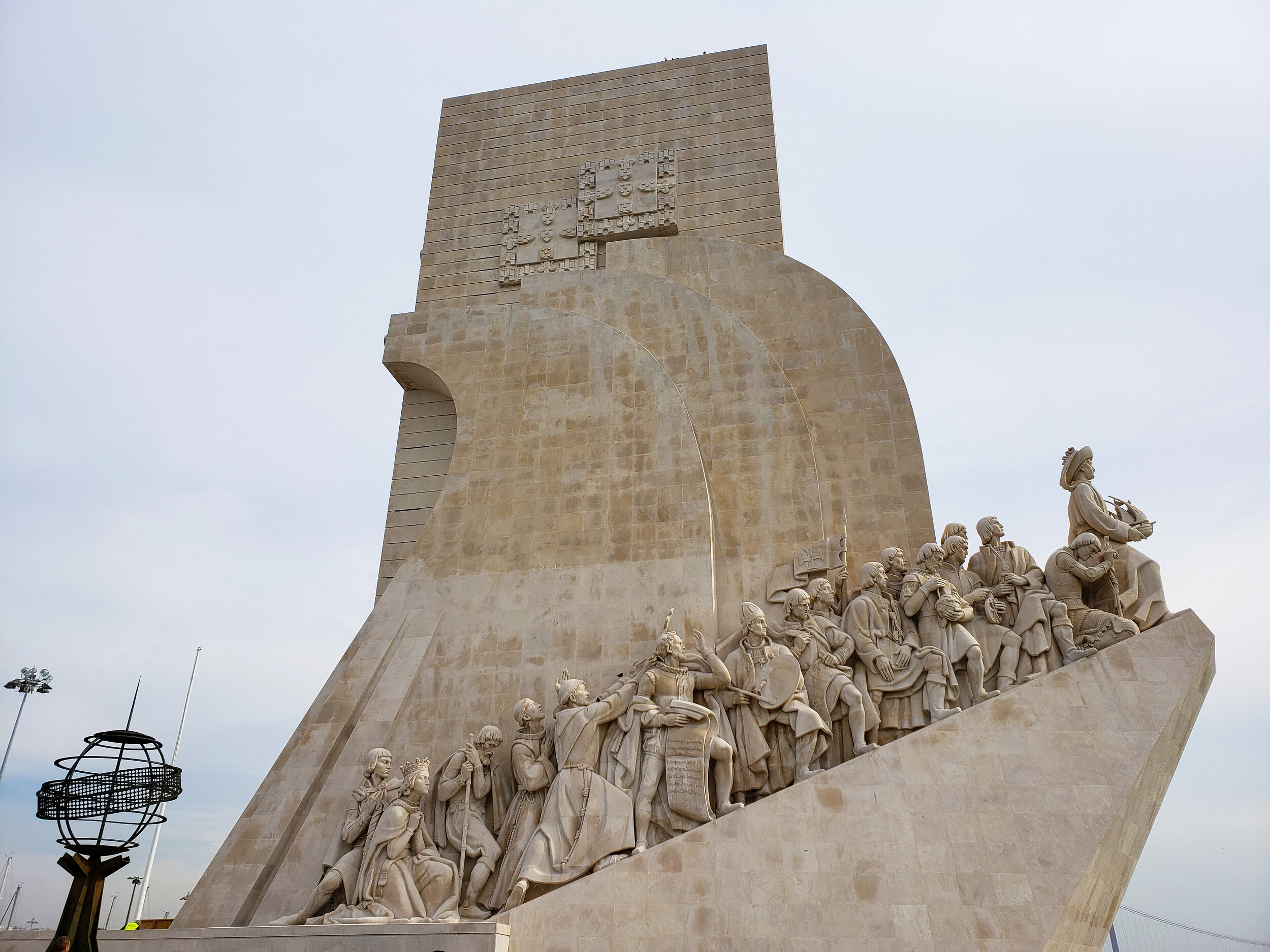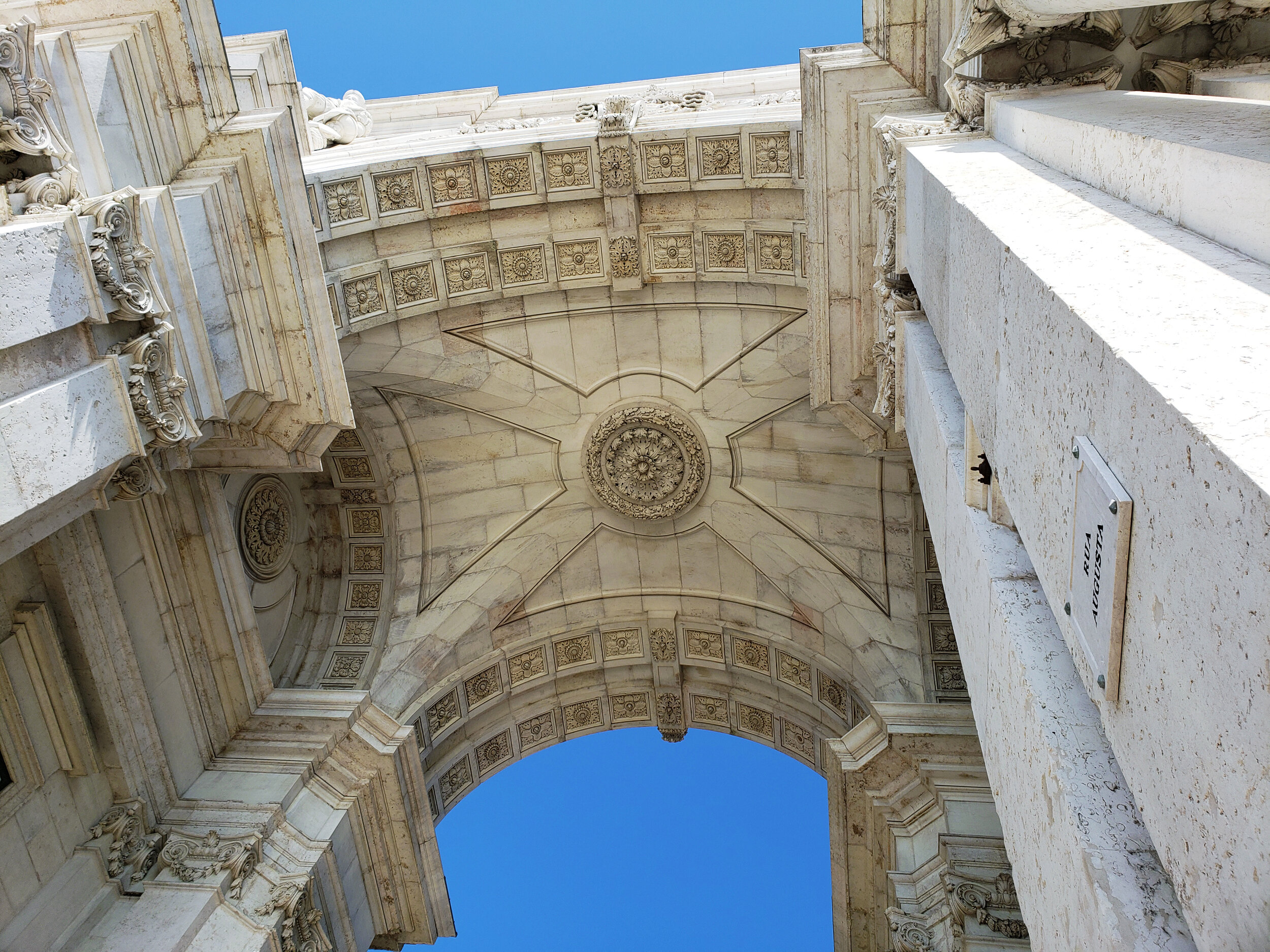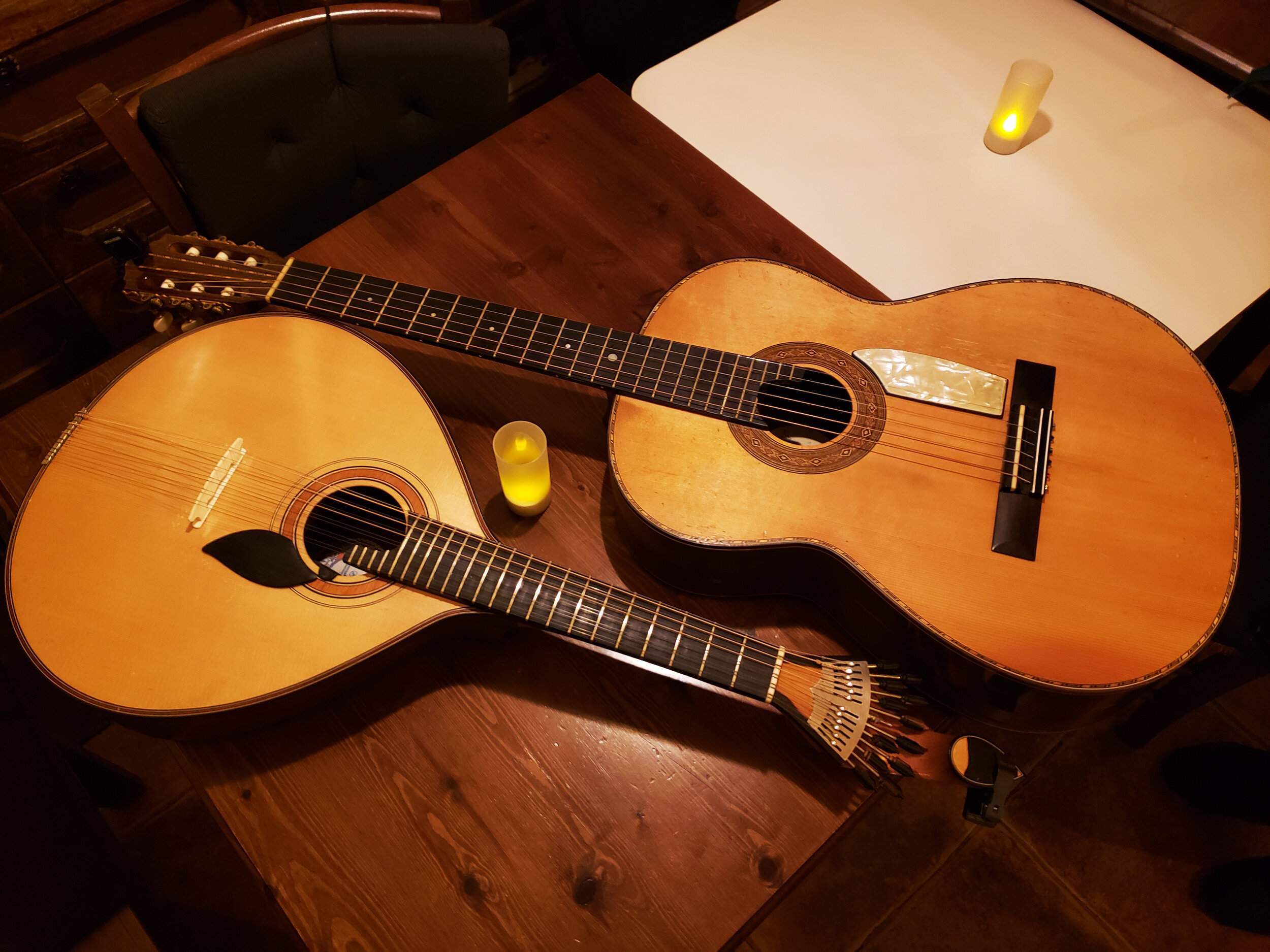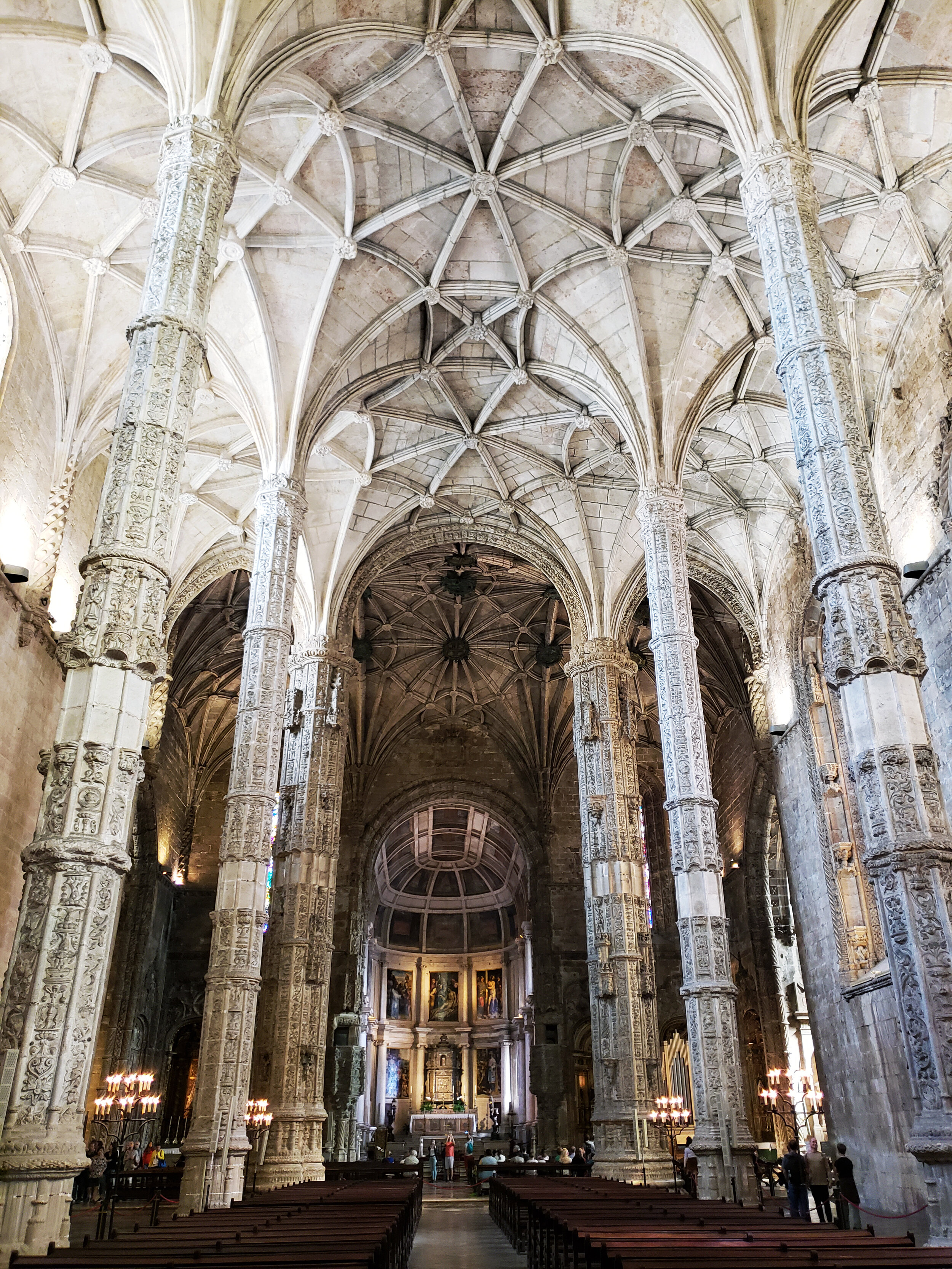Situated on the Atlantic coast of the Iberian peninsula, Lisbon is the second-oldest European capital and gateway to Europe for anyone who is traveling from the Americas. It now stands as a legacy of a vast and storied empire that once spanned from the Americas to Africa and Asia. Additionally, its position in the middle of the country and status as a global city combine to bring you a melting pot of culture, history and delicious cuisine. Walking around Lisbon and seeing all of the colorful buildings, statues and characteristic trolleys feels almost like you’ve been transported to the late 19th century. For us, Lisbon (and Portugal in general) is one of Europe’s best kept secrets and we encourage every traveler to visit this beautiful city.
Places of Interest
Located in the district of Belem, Jeronimos Monastery is a UNESCO World Heritage Site that was constructed in the 16th century in the Portuguese Manueline style. Most interesting is that it houses the tombs of kings, former presidents and the famous explorer Vasco da Gama as well as the great poet Luís Vaz de Camões. Witnessing the tombs of people so important to the history of our modern world was deeply humbling.
In the district of Belem you can also visit the iconic Belem Tower, a UNESCO World Heritage Site that was built in the Portuguese Manueline style and served as the launch point for Portuguese explorers during the Age of Discovery. For only 6 Euro ($7 USD) you can also climb to the top of the tower and get a really nice view of the river and nearby bridge.
Just a short walk from Belem Tower is the impressive “Monument of the Discoveries” which was built to commemorate the Portuguese Age of Discovery and showcases important figures from this time period. This towering structure is shaped like the sail of a ship with a statue of Henry the Navigator at the very tip holding a miniature ship and leading the rest of the explorers behind him. If you love history (Julian), you can easily spend an afternoon looking up at the various statues of famous people such as Vasco da Gama, Ferdinand Magellan, Pedro Alvares Cabral, João de Barros, Luís Vaz de Camões and others.
Located uphill from the Alfama neighborhood (the oldest neighborhood in Lisbon), you can visit the old Moorish castle, Castelo São Jorge. The site of the castle was actually occupied for thousands of years before the Moorish conquest of Iberia and they have the remains of an old Roman villa that you can tour as well as the castle itself. However, the best part is walking around the castle grounds and finding spots where you can catch stunning views of the entire city. It only costs 10 Euros ($12 USD) to visit the castle and you can find more information at: http://castelodesaojorge.pt/site/en/tickets-schedule-and-information/
This is a beautiful public square right on the water that is lined with shops, cafes and features a prominent triumphal arch that was built to commemorate the reconstruction of Lisbon after the catastrophic earthquakes, fires and tsunami of 1755. Also featured in the square is an equestrian statue of King Jose I, the king of Portugal who lead the reconstruction efforts during this turbulent time. At this square you can also find a tourist information office as well as free walking tours and several museums.
Pro tip: In order to take the best pictures make sure to get there in the morning around 7am or 8am when the plaza is empty. You will also be able to watch the sunrise on the water.
Also known as the Church of Santa Engracia, this building houses the tombs of several great figures in Portuguese history such as Manuel de Arriaga (1st elected president of Portugal), Humberto Delgado (founder of TAP Air Portugal), Amalia Rodrigues (famous fado singer) and Eusebio (one of the best soccer/football players of all time).
Built in 1147 CE, this is the oldest and most important church in the city and a national monument since 1910. Buried here are important figures from early Portuguese history king Afonso IV and Lopo Fernandes Pacheco.
Things to do
Explore the Alfama neighborhood - Alfama is the oldest neighborhood in the city and it’s laid out like a maze with several winding alleys and stairs leading up past old apartment houses and narrow streets. You can easily spend an entire day just getting lost in this neighborhood, watching street performers and sampling Ginjinha, a delicious cherry liqueur and local favorite from one of the many shops and kiosks scattered throughout.
Attend a Fado show - The old neighborhood of Alfama is famous for “Fado” music, which is part of the UNESCO Intangible Cultural Heritage List and traces its roots back to early 1820s Lisbon. “Fado” is highly emotional and poetic music that evokes “saudade”, the Portuguese word for longing. This was one of our favorite experiences in Lisbon and we highly recommend that anyone visiting this city attend a show. In our case, we attended a fado show at Sr. Fado, a family owned restaurant whose owners are also fadistas. We were treated like family and the owners personally cooked all of the food that was served and then after the meal was over, they grabbed some chairs and started playing guitar and singing fado with the utmost passion. It was almost like being at someone’s house and the hosts randomly breaking out into song. The food was brilliant and needless to say, we highly recommend them. Make sure to get there early as space is limited.
Restaurants - As a melting pot of Portugal’s colonial past, Lisbon is a culinary delight. Some of the restaurants that we highly recommend are:
Ramiro - This restaurant specializes in high quality, fresh seafood and was recommended to us by a local. When we ate here, the waiter even brought us an actual lobster that was still flapping about in order for us to see that all of the food was fresh! We ate some amazing lobster, clams, oysters, spider crab and barnacles. Although this was our most expensive meal in Lisbon, it was worth every penny.
Boa-Bao - This is a pan-Asian restaurant with creative dishes from the far east, an excellent cocktail menu and amazing staff. Be sure to get there early or make reservations as they are always packed.
Sr. Fado - This restaurant offers traditional Portuguese cuisine cooked by the restaurant owners/hosts themselves. We chose to have the seafood cataplana with rice (for soaking up the juice) and it was one of our favorite meals while in Lisbon. The best part is at the end of the meal when the owners play guitar and sing fado songs for the customers.
Manteigaria - This bakery specializes in making pastel de nata, a tasty Portuguese custard tart that pairs beautifully with an espresso and is one of the best ways to start off your day of sightseeing. You can actually watch the staff freshly making these custard tarts while waiting in line.
La Piadina - This is a small restaurant that specializes in making piadinas, a tasty flatbread that is typical of Italy’s northern region. It was a beautiful reminder of our time in the romantic city of Verona. This was our most economical meal while in Lisbon and we recommend it as a quick grab and go meal during a day of busy sightseeing.
Bairro Alto - This neighborhood is the city’s party district featuring many bars, cafes and little restaurants on every block. In fact, it is not uncommon to see people walking around holding open containers of alcohol as well as drug dealers openly selling every kind of drug imaginable to people on the street. According to several locals that we spoke with, carrying small amounts of drugs is not considered a crime in Portugal so do not be surprised if dealers in Lisbon openly approach you looking to make a sale. If this is not your thing, then just politely decline and ignore them.
Rua Augusta - This is Lisbon’s main pedestrian street that goes from Praça do Comércio/Commerce Square (by the ocean) all the way to Rossio Square (by the main train station). The street is lined with shops, restaurants, cafes and street performers. Most interesting of all is the view of the grand triumphal arch as you are walking and the signature mosaic patterns on the cobble stone street.
Chiado - This is the shopping district of downtown Lisbon and you can easily spend a day here browsing the various high end retailers as well as visiting numerous theaters and museums. There is also a large underground shopping mall with several well known international retailers as well as idyllic trams and an old elevator that has become a tourist attraction called Elevador de Santa Justa. For only 5 Euro ($6 USD) you can ride the elevator to the top and get panoramic views of the city.
LX Factory - This is a repurposed industrial complex that is very similar to the Wynwood neighborhood in Miami, USA or Ponce City Market in Atlanta, USA. It was actually recommended to us by a local and we had so much fun exploring the artsy boutiques, galleries, studios, unique themed restaurants and bars.
Time Out Market - This is a local market that we would stop by every other day while in Lisbon. It’s filled with many kiosks selling a variety of freshly made food as well as vegetables, fruits, candies, chocolates, seafood, home goods, flowers and crafts.
We Hate Tourism Tour - This tour company offers day trips to the surrounding areas as well as off the beaten path type tours. The tour guides offer the best recommendations for sites, restaurants, shops and other hidden gems that most tourists don’t know about and we highly recommend them. Indeed, this was the best tour that we ever booked and the irony and sense of humor that this company brings to the experience is unique and awesome. Their headquarters office is actually located at the LX Factory and you can find more information at: https://www.wehatetourismtours.com/
Day Trip Ideas
Sintra
A UNESCO World Heritage Site famous for its picturesque palaces, parks and castles.
Cascais
Visit the resort beach town of Cascais, which is a popular tourist destination
Cabo da Roca
A rugged landscape that marks the western most point of mainland Europe
Our Family Album





